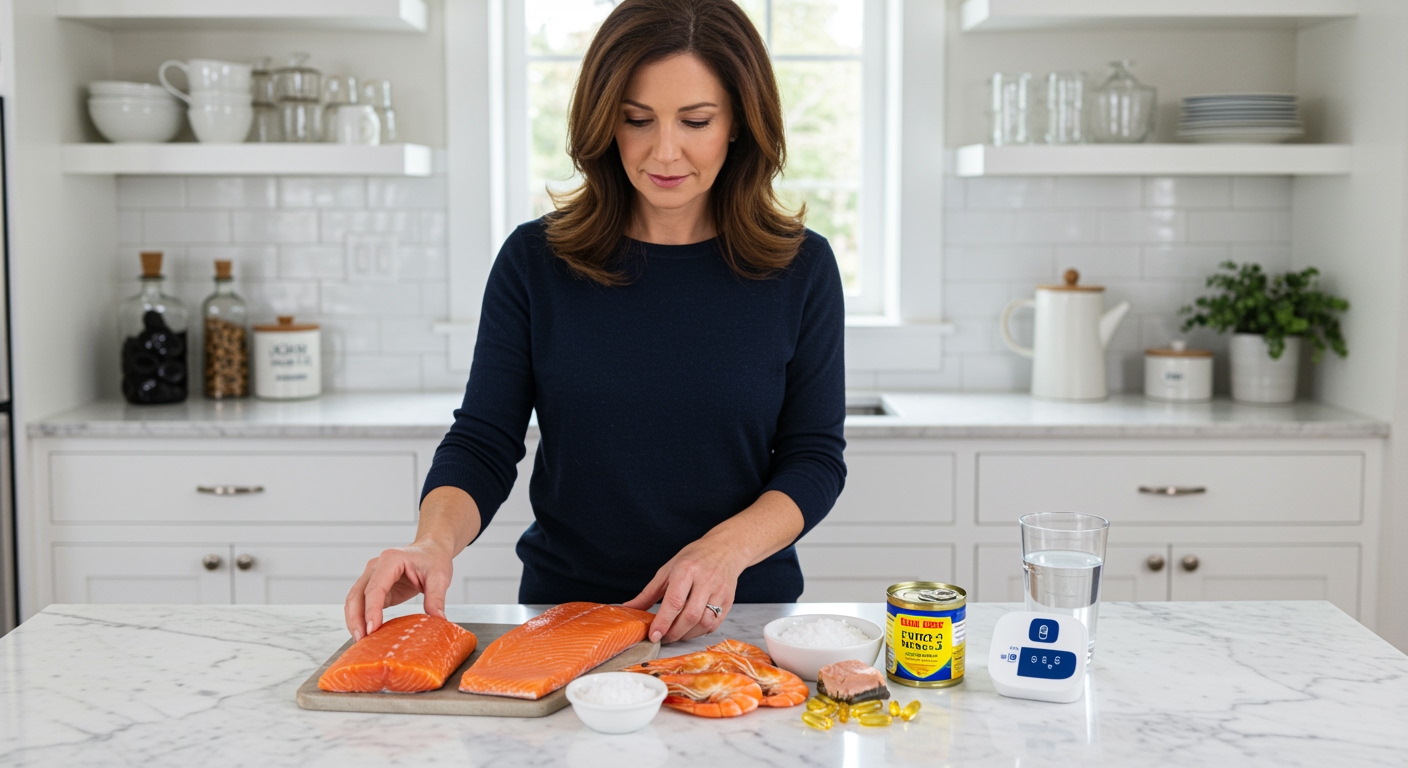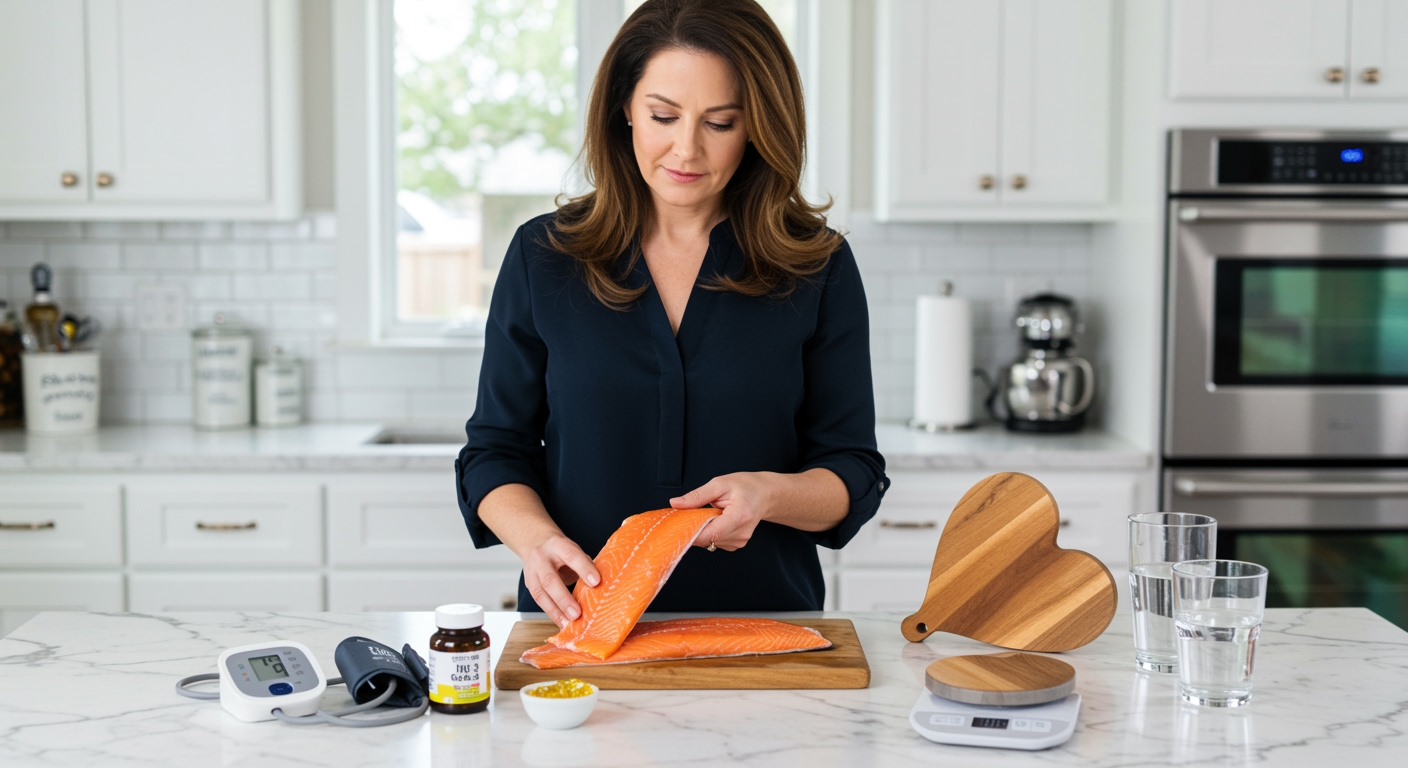✪ Key Takeaway: Seafood can help raise low blood pressure through omega-3s and protein, but choose fresh over processed varieties.
Introduction
Your doctor just told you that your blood pressure is too low, and now you wonder if your favorite salmon dinner might actually help.
You might be asking this question because low blood pressure can cause dizziness, fatigue, and fainting spells that disrupt your daily life.
Hi, I am Abdur, your nutrition coach, and today I am going to explain how seafood affects low blood pressure and whether it can be part of your solution.
How Does Seafood Affect Blood Pressure Levels?
Seafood contains omega-3 fatty acids that help your blood vessels function properly and maintain healthy circulation.
These healthy fats work by reducing inflammation in your arteries and improving the flexibility of blood vessel walls.
When your blood vessels are more flexible, your heart can pump blood more efficiently throughout your body.
The protein content in seafood also plays a role in maintaining stable blood pressure by supporting proper fluid balance in your body.
Research shows that people who eat fish regularly tend to have better cardiovascular health and more stable blood pressure readings.
However, the sodium content in some seafood preparations can actually help raise blood pressure levels, which might benefit people with hypotension.
✪ Fact: Omega-3 fatty acids from seafood can improve blood vessel function within just a few weeks of regular consumption.
Which Types of Seafood Work Best for Low Blood Pressure?
Fatty fish like salmon, mackerel, and sardines provide the highest amounts of omega-3 fatty acids that support healthy blood pressure.
These fish contain both EPA and DHA, two specific types of omega-3s that your body uses to maintain cardiovascular health.
Shellfish such as shrimp and crab naturally contain more sodium, which can help raise blood pressure levels in people with hypotension.
Canned fish like tuna and salmon often have added salt during processing, making them potentially beneficial for low blood pressure.
Fresh white fish such as cod and halibut provide lean protein that supports overall cardiovascular function without excessive sodium.
The key is choosing seafood that matches your specific blood pressure needs and preparation methods that enhance rather than diminish the benefits.
✪ Pro Tip: Aim for at least two servings of fatty fish per week to maximize omega-3 benefits for blood pressure regulation.
What About Sodium Content in Seafood?
Natural seafood contains moderate amounts of sodium that can actually help people with low blood pressure achieve healthier levels.
Your body needs adequate sodium to maintain proper blood volume and pressure, especially if you have hypotension.
Processed seafood products like smoked salmon, canned fish, and breaded fish sticks contain significantly more sodium than fresh varieties.
This higher sodium content might be beneficial for people with low blood pressure, but you should monitor your response carefully.
Fresh shellfish naturally contains more sodium than finfish, with oysters and clams having particularly high levels.
The sodium in seafood works with other minerals like potassium and magnesium to help regulate your blood pressure naturally.
✪ Note: Always check with your doctor before increasing sodium intake, even from natural sources like seafood.
How Much Seafood Should You Eat for Blood Pressure Benefits?
Most nutrition experts recommend eating two to three servings of seafood per week for optimal cardiovascular benefits.
One serving equals about 3.5 ounces of cooked fish, which is roughly the size of your palm.
For people with low blood pressure, you might benefit from eating seafood more frequently, perhaps four times per week.
The timing of your seafood consumption can also matter, with some people finding that eating fish at lunch helps maintain energy levels throughout the day.
You should spread your seafood intake throughout the week rather than eating large amounts in one or two meals.
Monitor your blood pressure readings after adding more seafood to your diet to see how your body responds to the dietary changes.
✪ Pro Tip: Keep a food and blood pressure diary to track how different types of seafood affect your readings.
Are There Any Risks to Consider?
Some people with shellfish allergies obviously need to avoid certain types of seafood completely.
Mercury content in large fish like shark, swordfish, and king mackerel can be a concern if you eat these varieties frequently.
Pregnant women and young children should limit high-mercury fish consumption regardless of blood pressure concerns.
Processed seafood products often contain preservatives and additives that some people may be sensitive to.
If you take blood pressure medications, adding more seafood to your diet might interact with your treatment plan.
Raw or undercooked seafood carries risks of foodborne illness that could temporarily affect your blood pressure and overall health.
✪ Note: Choose low-mercury fish like salmon, sardines, and anchovies for regular consumption to minimize health risks.
The Bottom Line
Seafood can indeed help people with low blood pressure by providing omega-3 fatty acids, protein, and natural sodium that support healthy circulation.
Smart food choices create lasting health changes, but consistency matters more than perfection, so focus on adding seafood regularly rather than dramatically changing your entire diet overnight.
I would love to hear about your experiences with seafood and blood pressure in the comments below, and please share any questions you might have about incorporating more fish into your meal planning.
References
At NutritionCrown, we use quality and credible sources to ensure our content is accurate and trustworthy. Below are the sources referenced in creating this article:
- British Heart Foundation: Fish oils and blood pressure powers
- Mayo Clinic: Omega-3 in fish: How eating fish helps your heart
- PMC: Seafood Consumption and Components for Health
- American College of Cardiology: Seafood and Cardiovascular Health





